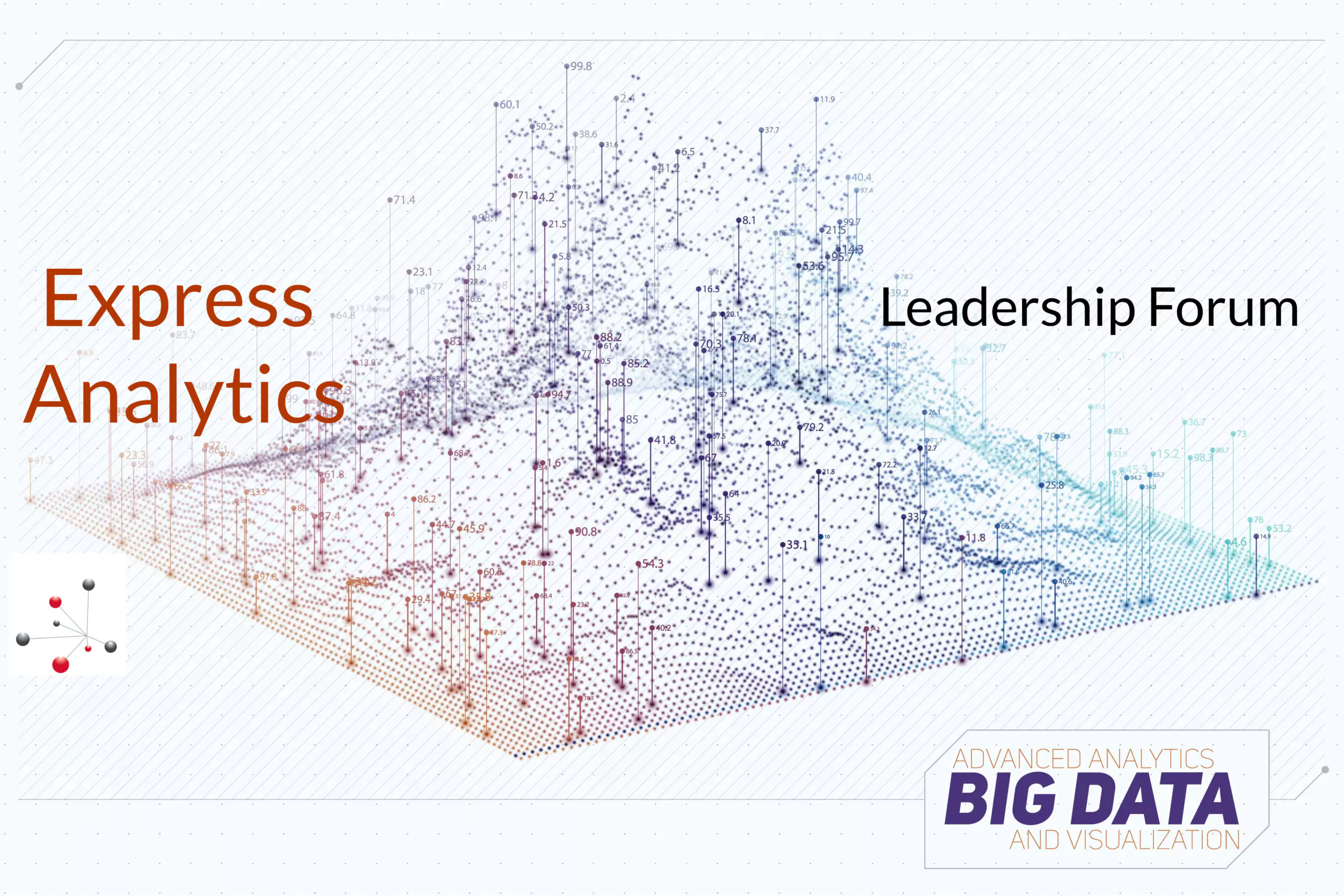New CDP buyers must first prioritize value they want
These days, there’s scarcely a digital marketer who has not heard the words, customer data platform (CDP). Although today we are seeing the 2nd and the 3rd iterations of a CDP, there are still a lot of questions that organizations typically ask of a CDP, or before making up their minds to purchase the software.
As part of its new series – Express Analytics Leadership Forum – we invited Manoj Gupta, a well-known digital marketer and author of a book on the customer data platform to share his experience of working with a CDP.
 With 22 years of experience in Information Technology, Mr Gupta is a digital veteran and much sought-after industry speaker. He has been a solutions architect, principal architect solution director, and has also led end-to-end large digital transformation projects as chief architect.
With 22 years of experience in Information Technology, Mr Gupta is a digital veteran and much sought-after industry speaker. He has been a solutions architect, principal architect solution director, and has also led end-to-end large digital transformation projects as chief architect.
Mr Gupta is currently the Solutions Director and Chief Architect, Digital Services Line at CapGemini.
Here are some excerpts from the interview:
Q1) Do you think that the CMO will continue to be the sole owner of the CDP?
A1) CDP as a concept has evolved over the years. Primarily, it is for the marketers. So CMOs were the first one to have thought of this. In the initial days of the entry of the customer data platform in the market, no doubt, the CMO was the first one who understood it and headed the platform. But, over the years, as a CDP evolved, the focus was not only on marketing. It’s no more just a marketing platform. Later, other parties, too, started getting involved like data scientists, analysts, CXOs and CIOs in CDPs. We, at CapGemini, have many customers like theme parks who have embarked on the journey to cater to millions of customers. So from all this it is clear than CEOs have started taking a keen interest in a CDP. So they are spearheading the project there. Hence, it is no more a game of the CMO, it involves CIOs and CXO levels as well.
Q2) Do you think today because there are many owners, there’s bound to be confusion, overlapping, data sitting in silos…
A2) At an organization level, while we are trying to have a centralized approach, there’s a very clear demarcation of the roles and responsibilities. Eventually, a CMO and a CIO in an outfit need to work together on this. The accountability may lie with the CMO but eventually it is the CIO or CTO in an organization who are helping them out in these projects and implementing them for their clients or for their own enterprises. There is a fine line between them but at the same time there’s a clear demarcation in terms of ownership and responsibility. Eventually, it is like a centralized place for data.
Q3) Is there a need for a specialist CDP for SMB businesses?
A3) Absolutely. Earlier, a CDP was for large enterprises. Larger data was in silos. But CDPs have evolved, and today, large companies are getting a lot of benefits from deploying a CDP. However, for smaller organizations, it is very critical that they also need to centralize their data and have a central data repository. Since they cannot afford that level of financial burden of a CDP, a scaled down version of a CDP that is fine tuned to the requirements of smaller outfits will help a lot.
We know that SMBs are a huge market so if there is a specialized product for this segment it will help them. They will be more tuned to leverage the power of a CDP to give hyper-personalized offers to their customers.
Q4) In your knowledge are there any such CDPs for SMBs?
A4) No, not yet. That is a grey area. There’s quite a big gap there. The demand is very high and maturity level of SMBs is also very high so someone should come out with such a product.
Q5) What are the top challenges before the omnichannel retail industry while implementing a CDP?
A5) The main one is lack of awareness about what a CDP can actually do. Secondly, ERPS and CRMs have not leveraged this application, so to speak. And clients are bringing this new application in the ecosystem without understanding value propositions. They are just buying the license but they are not leveraging it. In fact, we do a lot of knowledge selling for our customers to make them understand the CDP’s value proposition. At CapGemini, we spend hours trying to make them understand the value a CDP brings.

Q6) Because a CDP comes with a high price tag, is that itself a barrier?
A6) Yes, the license cost is definitely one of the major issues, but then again, it all depends on the value proposition. See, cost is one part but if it brings 10 X value or if the RoI is very high, then no one bothers about the cost. Once we make them understand the value proposition of this, if the customer gets a substantial RoI, it will be open to grabbing it.
The other challenge is in terms of implementation. As a Global System Integrator (GSI) we provide a lot of guidance around this to our clients and help them implement it.
Q7) What advice would you give to a first time buyer of a CDP? Would you recommend buying a CDP off the shelf or developing one in-house?
A7) For first time CDP buyers, they should be aware of the vision, mission and strategy of the organization. What value proposition they need to get from the app itself is something they should be clear about. Many organizations have already invested quite heavily into CRMS etc. but the challenge is they are not able to leverage the system.
So my suggestion is to first prioritize what value they want out of it. They need to do some pilot and platform selection processes. Each platform has specific offering. One size does not fit all. They need to follow all these strategies.
Q8) Which are the biggest 2 mistakes an enterprise can make before buying a CDP?
A8) Very good question. There are 2 challenges, the way I see it. CDP Buyers do not understand entirely the value proposition a CDP has to offer, and as a result they fail to understand how valuable a CDP is. Sometimes they think a CDP is an extension of a CRM but fail to grasp that the core value of a CDP is very strong. Sometimes, they look at IT teams to extend the benefits of the CRM and mimic it into a CDP, and so fail to get the entire value of a CDP.
The other mistake often made is choosing the right CDP out of the 100s of CDPs out there. If they choose the wrong platform, it will not help.
Q9) So how important is the analytics bit in the entire CDP value proposition? Many focus on activation layers….
A9) Analytics is at the heart of it. If I am not able to understand the RoI of my leads, I will not be able to justify the spend. So analytics plays a very important role. If certain sets of campaign management do not work, we need to add or refocus.
Q10) What are the challenges that an enterprise faces after acquiring a CDP?
A10) The biggest challenge is the implementation of the CDP in the overall marketing plan; how to leverage core value proposition. Even if they do not have exposure, they try to go ahead with the CDP. While you are finalizing the CDP, you need the right partner to implement it. Maybe for 6 months, the vendor can do the implantation for the client, after which the latter can then induct inhouse teams. As an example, we offer a 3 weeks certification program to CDP Buyers.
Q11) I can see a secondary business here; of vendors not only selling a CDP but also hand-holding their clients over a period of time
A11) Yes. The major vendors have started giving 3-4 weeks of program, even a certification program, to their channel partners to help them understand the CDP’s features. They provide this training free of cost. This is critical in providing knowledge of product.
Q12) In the last 3 years, there’s been a surfeit of CDPs and vendors, yet some CDPs have failed? Why so?
A12) CDPs fail because sometimes clients embark on this journey by being overtly influenced by the word of mouth. They go ahead and buy a CDP off the shelf, not understanding that it will require a lot of customization, and that is why they fail.
The second reason is the SI implementation partner they select. If the partner does not have adequate knowledge, they may not be able to get maximum value from the CDP so even though they have invested so heavily, eventually the value is not shown, making the management say the investment is not paying off, so the CDP takes a back seat. It will become like unread books in library.
Q13) You see, local governance data privacy plays a very important role so yes, they must comply with local laws. Will CDPs become more local or regional?
A13) Many a times we see that CDP Buyers purchase an enterprise level, but every organization must adhere with local laws, otherwise they will not be able to implement the CDP at the regional level. It should have local governance compliance built in.
Q14) What are best practices around a POC structure?
A14) It entirely depends on which customer you are servicing. Every customer has different expectations from their CDP. Let’s say you are starting with a theme park client like Walt Disney, etc. These companies have millions of customers. How to give personalized services to all of them? So we can start with a small POC on how to give personalized offering to their customers, see their response, find out whether they are utilizing the discounts for their families, and all of that. Once they see the results, then you can expand. We have done this for few of our customers. Only after POC results, these clients have extended the things further at an organization level.
Experience Next-gen and Powerful CDP Analytics
Q15) Interesting to know that theme parks are looking at CDPs. Which are the other sectors popularly deploying CDPs?
A15) Retail, teleco, automobile, travel and logistics.
Q16) Do you find only B2C clients or even in the B2B space, too?
A16) My experience has seen customers largely in the B2C space where they have millions of customers. In B2B where data size is not so large, but value of customer per order is very high, but we have not encountered in that space.
Q17) If a CDP has different modules, how about giving a managed service in a modular way? Say for example, someone wants to find out only customer lifetime value? Will this point solution approach work?
A17) No, I don’t think so because customer is looking for one stop solution where you manage all the things for a customer, they are more likely to go in for it. If we give them a wholistic service, they are happy to outsource it out. Do it in one go and cater to multiple customers.
Q18) How important is UI/UX or more adoptions of API? Does it lead to stickiness of the platform
A18) You see, the major end users are marketers, they are not from the IT sector, and so may not understand APIs etc. The more sophisticated visualization is, they will use it without involving the IT, and it is easier to adopt such as CDP. So UI/UX plays an important role in stickness.
Q19) One question about point solutions or modular approach? The last mile is .. what industries he sees the most traction
A19) Do not dilute this. A CDP has certain core activities and there should be flexibility, if the end user wants to extend it further to align it with other means it can be done so. So both options are offered.
Build sentiment analysis models with Oyster
Whatever be your business, you can leverage Express Analytics’ customer data platform Oyster to analyze your customer feedback. To know how to take that first step in the process, press on the tab below.
Liked This Article?
Gain more insights, case studies, information on our product, customer data platform


No comments yet.